Holiday cacti are broadly broken down into three main categories: Easter, Christmas, and Thanksgiving cacti. These plants are wildly popular in the houseplant world thanks to their bright flowers and low maintenance needs, but holiday cacti cause a lot of confusion in gardening circles!
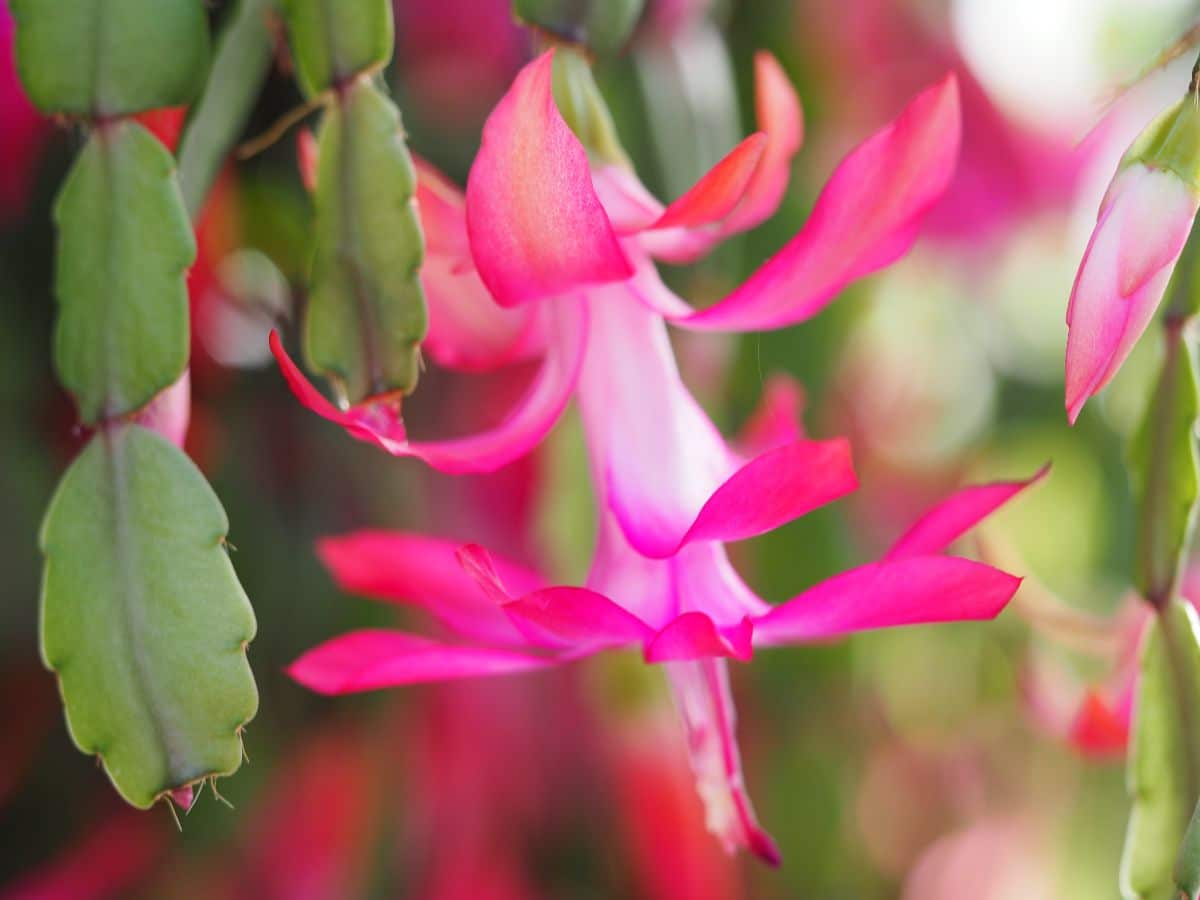
Most of the issues with holiday cacti stem from the fact that different types of holiday cacti look quite similar. However, there are actually 5 common varieties of holiday cacti that you may encounter at plant nurseries, and each of these cacti has its own unique set of characteristics.
Below, you’ll discover what makes each of these holiday cactus varieties stand out and a few growing tips, too!
Jump to:
- 5 Types of Holiday Cacti to Grow Indoors
- 1. Christmas cactus (Schlumbergera bridgesii)
- 2. Thanksgiving cactus (Schlumbergera truncata)
- 3. Easter cactus (Hatiora gaertneri)
- 4. Miniature Easter cactus (Schlumbergera rosea)
- 5. Orchid cactus (Epiphyllumspp.)
- Frequently asked questions
- What is the rarest color of Christmas cactus?
- How many times a year does a Christmas cactus bloom?
- Can a Christmas cactus get too old?
- What 2 things trigger a Christmas cactus to bloom?
- Can I propagate a broken piece of Christmas cactus?
- What is the difference between a Christmas cactus and a false Christmas cactus?
- Summary
5 Types of Holiday Cacti to Grow Indoors
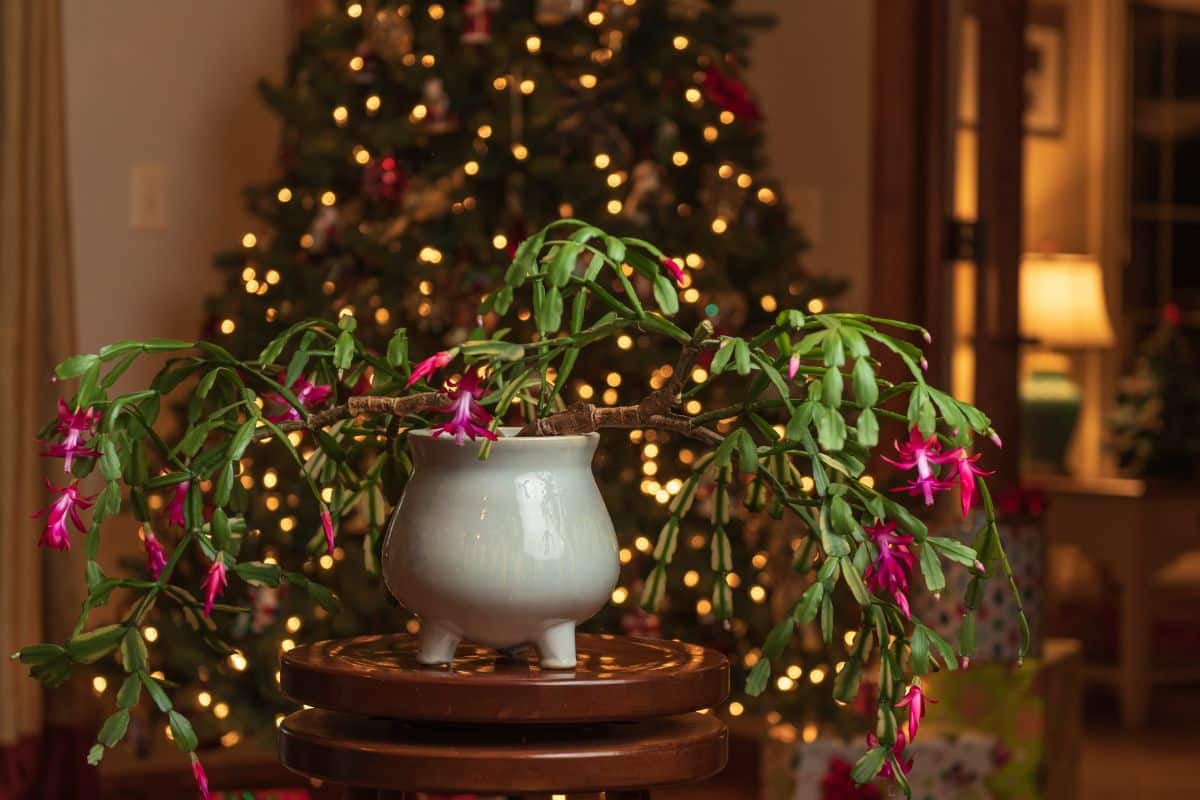
Despite their name, holiday cacti aren’t cactuses at all. In fact, these plants are actually succulents, and they hail from the tropical areas of South America, where they typically grow as epiphytes on trees.
Much like orchids, holiday cacti use small, aerial roots to anchor themselves to crevices in rocks and ragged tree bark, and they thrive in the dappled light of forest canopies (and lower light homes!)
Most holiday cacti bloom in the cooler months of the year, and they have similar, bright green, segmented stems and boldly colored flowers. But while holiday cacti may look alike, upon closer inspection, you’ll notice that the segmented leaves on different varieties of holiday cacti vary in shape, and their flower colors can differ too.
However, the main way that holiday cacti are differentiated from each other is by their bloom times!
Below, you’ll discover the 5 main types of holiday cacti, as well as simple tips for how you can distinguish these cactus varieties from each other. If you’re looking for an easygoing plant that will bloom late in the season, any of these flowering cactus plants will do the trick!
1. Christmas cactus (Schlumbergera bridgesii)
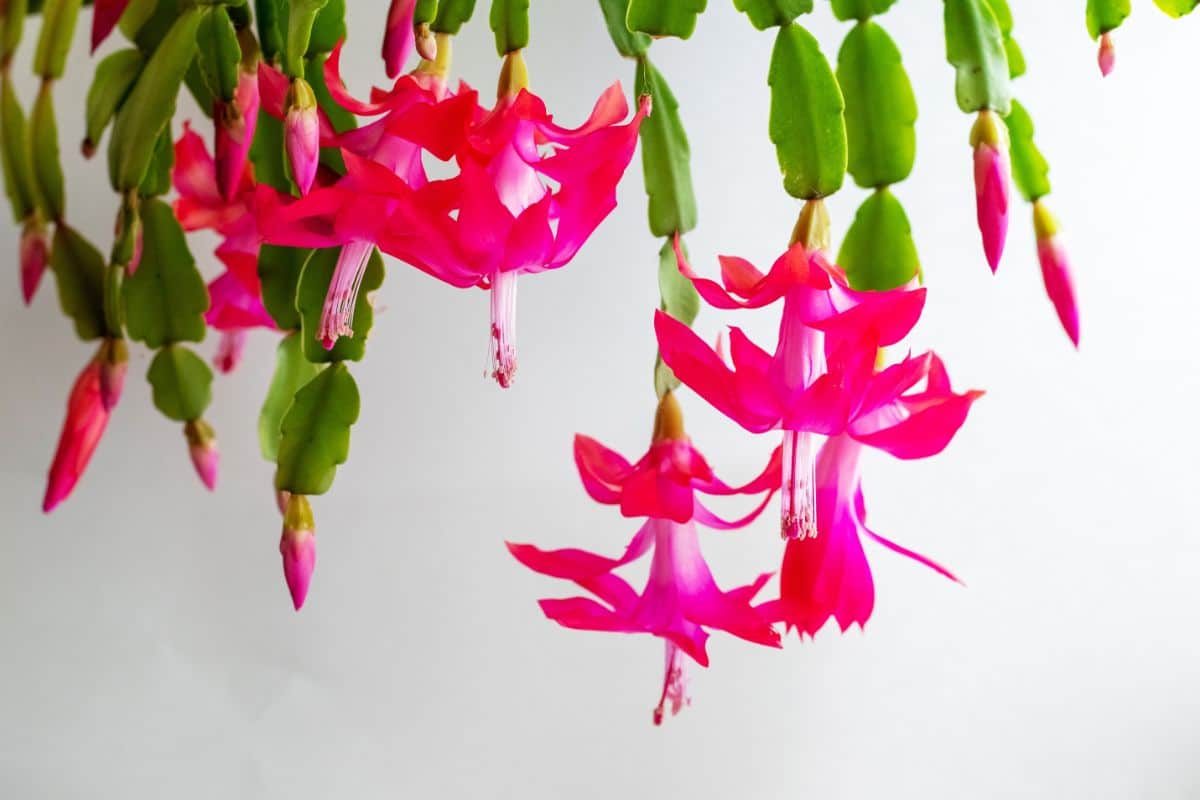
As its name suggests, the Christmas cactus blooms late in the season… just in time for Christmas! This plant is a short-day cactus variety, which means it needs to be subjected to a period of at least 6 weeks of cool temperatures and short days to bloom.
Conveniently, the short days of winter are just what Christmas cacti need to flower, and growers can generally be pretty hands-off with these plants, and they’ll still bloom prolifically from mid-November to January.
While bloom time can help you determine whether you have a Christmas cactus or another type of holiday cacti, this is not an exact science. After all, bloom time can vary a bit depending on lighting and other environmental factors.
A more reliable way to decide what type of holiday cactus you have is by inspecting the plant’s segmented leaves.
Christmas cacti leaves are somewhat rectangular in form, but they have lobed and notched edges that give them more texture. The edges of Christmas cactus leaves are much less jagged than Thanksgiving cactus leaves, but they’re not as rounded as the leaves of Easter cacti.
Aside from leaf shape, Christmas cacti can also be distinguished from other cactus varieties by their flowers. Christmas cactus flowers come in many different colors, including salmon, red, white, pink, and lavender, and they are large and relatively tubular in form.
Christmas cactus flowers also typically droop a bit on the plant’s stems, which makes these plants ideal for displaying in hanging baskets. Once they start flowering, Christmas cacti put on quite a display, and they can continue to flower for about 4 to 6 weeks, although individual flowers only last for roughly 6 to 9 days.
If you pick up a plant labeled as a Christmas cactus at the store, chances are you’ve got your hands on Schlumbergera bridgesii. However, there are other similar-looking Schlumbergera species that bloom around Christmas time, and these plants are also sometimes marketed as “Christmas cactuses.” Talk about confusing!
Some of the other Schlumbergera species that are sometimes known as “Christmas cacti” include:
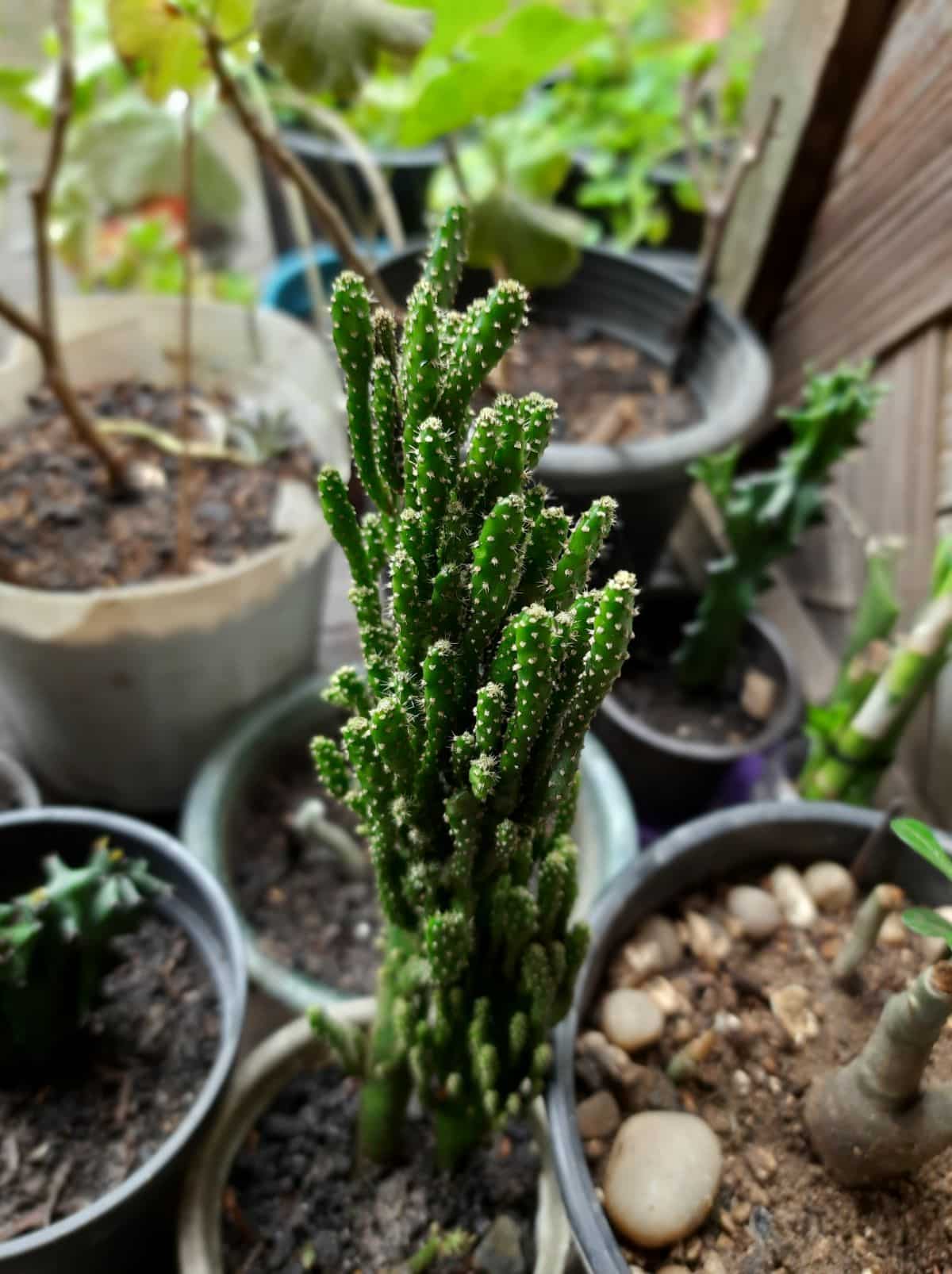
· Schlumbergera orssichiana
Native to Brazil, this Christmas cactus variety isn’t very common, but you may find hybrids of it for sale. Like other holiday cacti, Schlumbergera orssichiana has flat, segmented leaves, and its long flowers come in shades of pink or white.
· Schlumbergera kautskyi
Sometimes known as Kautsky’s Christmas cactus, this cactus variety is a relative newcomer to the houseplant scene, and it was first discovered in Brazil in the 1990s. With bright pink to red flowers, this stunner has all of the beauty of other Christmas cactus varieties, although it may be harder to track down at local plant nurseries.
· Schlumbergera opuntioides
A truly unique type of Christmas cactus, Schlumbergera opuntioides has segmented stems, but those leaf segments are much broader and rounder than the average Christmas cactus leaf. In fact, this plant looks more like a prickly pear (or opuntia) than a Christmas cactus, which is how it got its name!
· Schlumbergera exotica
Schlumbergera exotica was born when Schlumbergera opuntioides was crossed with Schlumbergera truncata. The resulting hybrid plant has slightly elongated leaf segments, but its flowers are just as showy as other Christmas cactus types!
2. Thanksgiving cactus (Schlumbergera truncata)
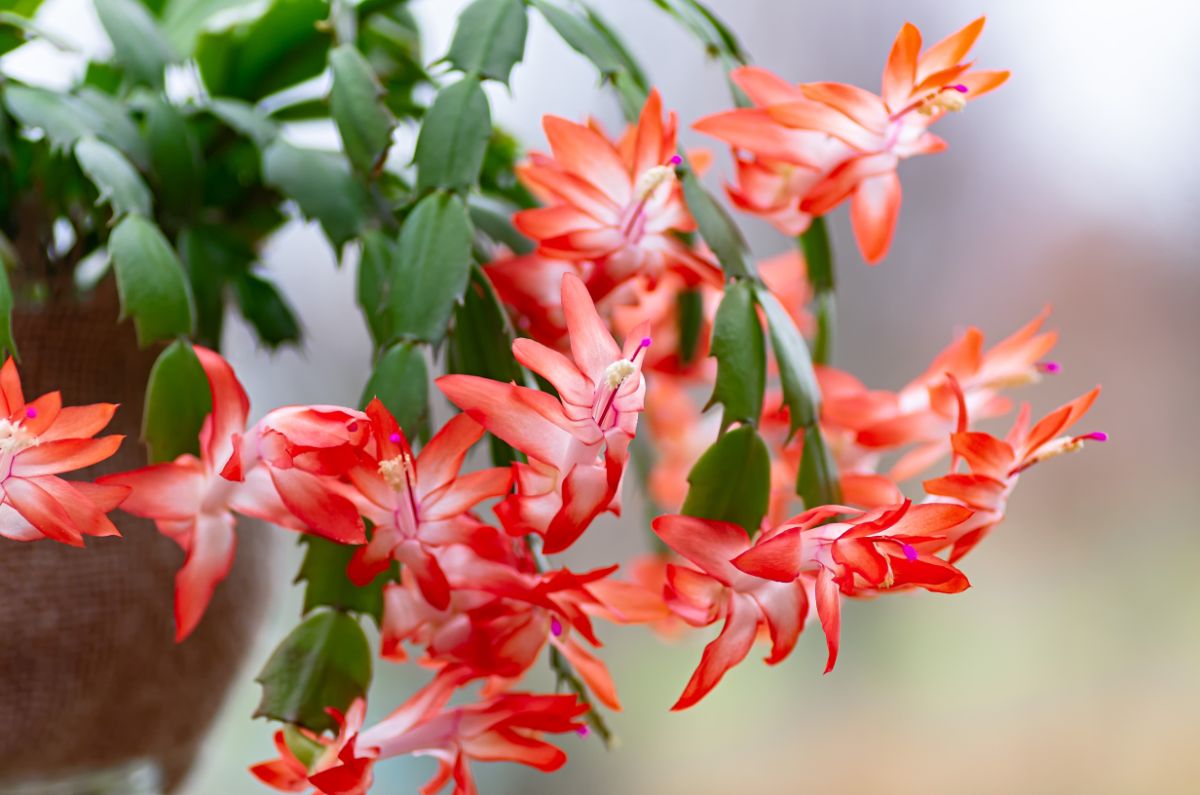
Thanksgiving cacti are another popular holiday cactus species, and you’ll often find these plants for sale in autumn.
Compared to Christmas cacti, Thanksgiving cacti bloom a bit earlier in the year, and they are usually in flower around Thanksgiving or in October through November (although plants can sometimes flower in February if they’re happy!) Like Christmas cacti, Thanksgiving cacti are short-day bloomers, and the long, cool nights of winter jumpstart their flowering season.
As with other holiday cacti, bloom time can vary, so it’s best to inspect your cactus’ leaves if you want to positively identify your plant as a Thanksgiving cactus.
Thanksgiving cactus plants have rectangular leaves with lobed margins, much like Christmas cacti; however, Thanksgiving cactus leaves have spikier and pointed edges that are slightly reminiscent of a crab’s claw. Charmingly, those serrated leaves have helped earn this cactus species its nickname, “crab claw cactus!”
Thanksgiving cacti have a long bloom time, and their elongated flowers come in many different shades. Flowers are most commonly pink, salmon, or orange in color, but you can also find Thanksgiving cacti with white or yellow blooms. Unlike Christmas cactus’ drooping flowers, Thanksgiving cactus flowers grow horizontally on the plant’s stems.
3. Easter cactus (Hatiora gaertneri)
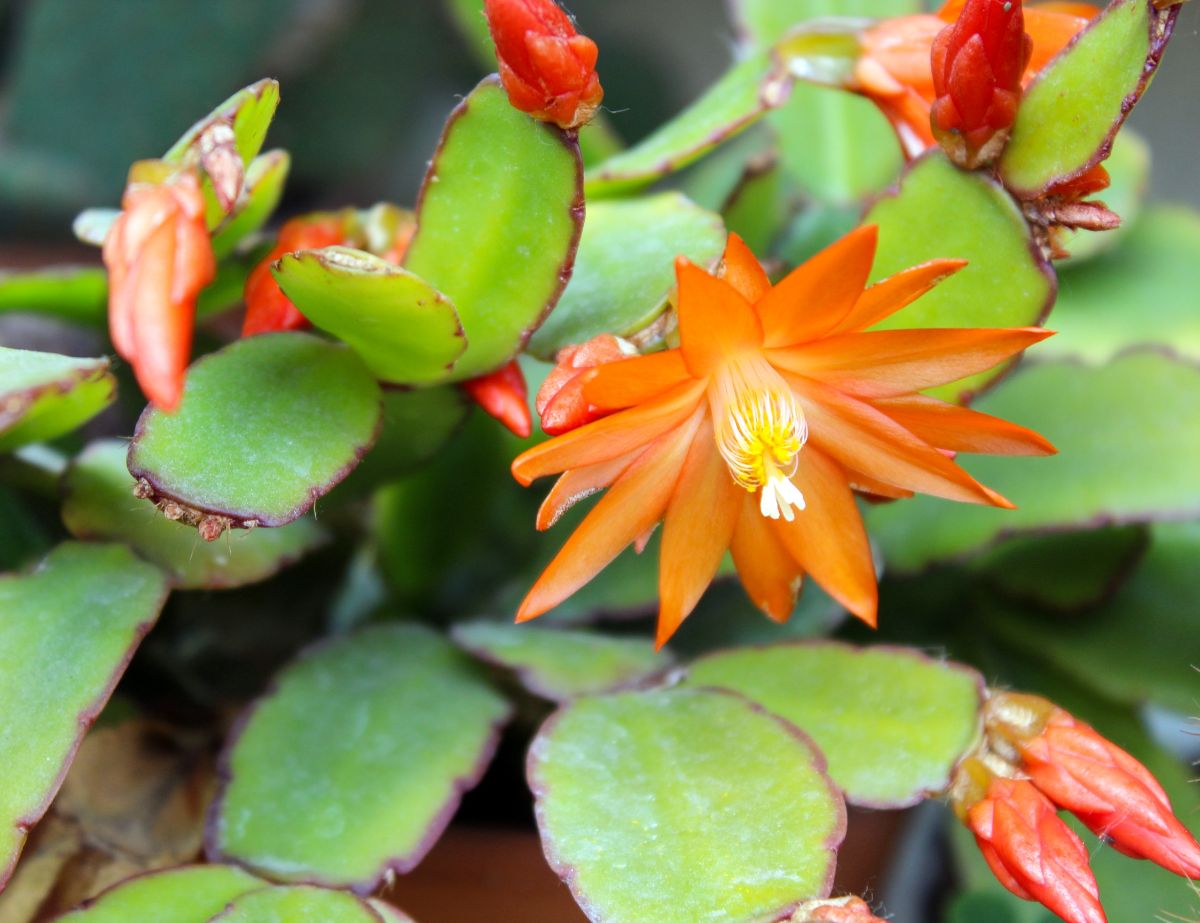
Easter cacti may look a lot like Thanksgiving and Christmas cacti, but these plants are in a different plant genus and they have several key features that help distinguish them from other holiday cactuses.
While Easter cacti also bloom during the cooler months, these plants need to be exposed to a longer period of cool and dark than other holiday cactuses. That’s why these plants typically flower in March or April, around Eastertime!
If you have a holiday cactus that’s flowering in early spring, you may be looking at an Easter cactus. However, there are a few other ways to tell these plants apart from their similar-looking cousins.
Compared to Thanksgiving and Christmas cactuses, Easter cacti have much rounder edges to their leaf segments, although the leaves themselves are still flat. Easter cactus flowers are also more star-shaped than tubular. Those flowers come in an assortment of shades, including red, orange, peach, pink, and lavender.
Although Easter cacti might look a bit different than other holiday cactus types, all holiday cactus plants have very similar care needs. Just grow them in rich, well-draining soil, water them regularly, and provide them with bright, indirect light, and they should grow happily for years!
4. Miniature Easter cactus (Schlumbergera rosea)
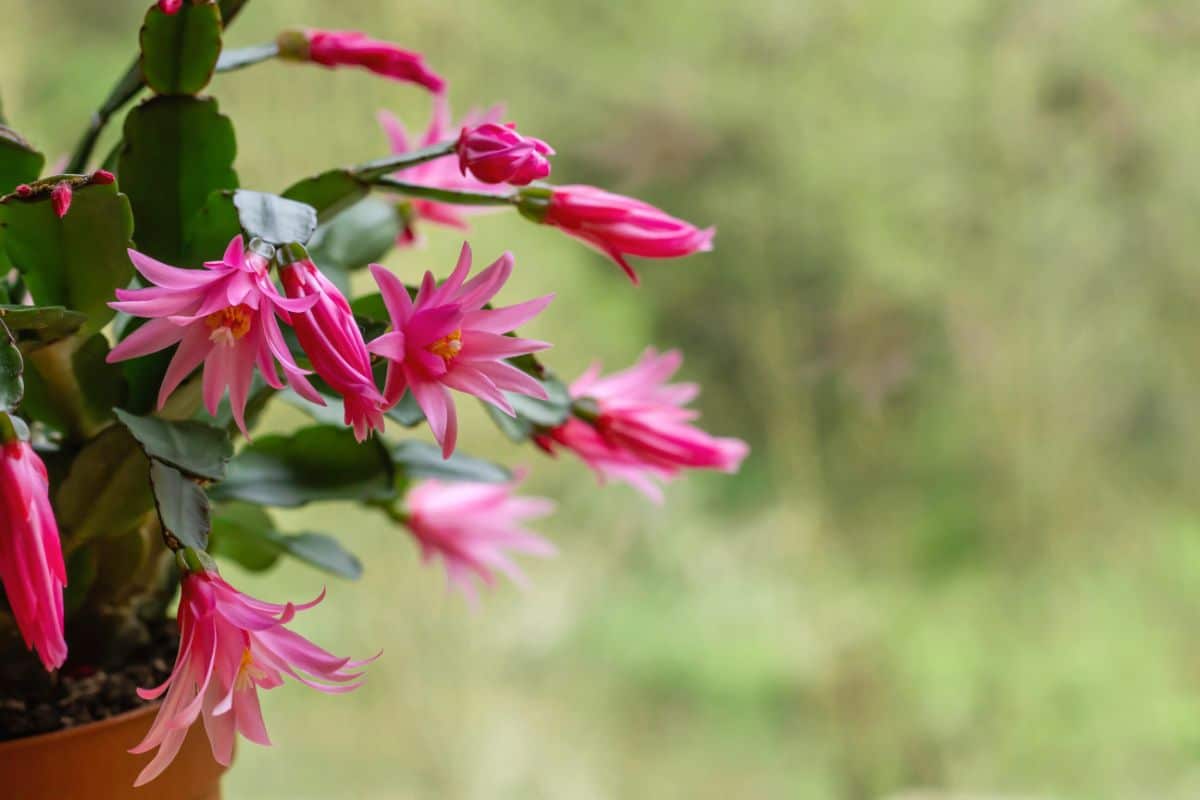
Miniature Easter cacti, also known as the dwarf Easter cactus or rose Easter cactus, is a lesser-known species, but it’s a close relative of the Easter cactus. In fact, most Easter cacti are hybrids derived from Schlumbergera rosea plants.
Like Easter cacti, miniature Easter cacti bloom in spring, from March to April, but these overachiever plants regularly rebloom in fall as well. Leaves on miniature Easter cacti are flat and rounded, and their elongated flowers come in a baby pink color. Compared to other holiday cactus plants, miniature Easter cacti are more diminutive in size, and they often max out at around 6” tall… the perfect size for a desktop plant!
5. Orchid cactus (Epiphyllumspp.)
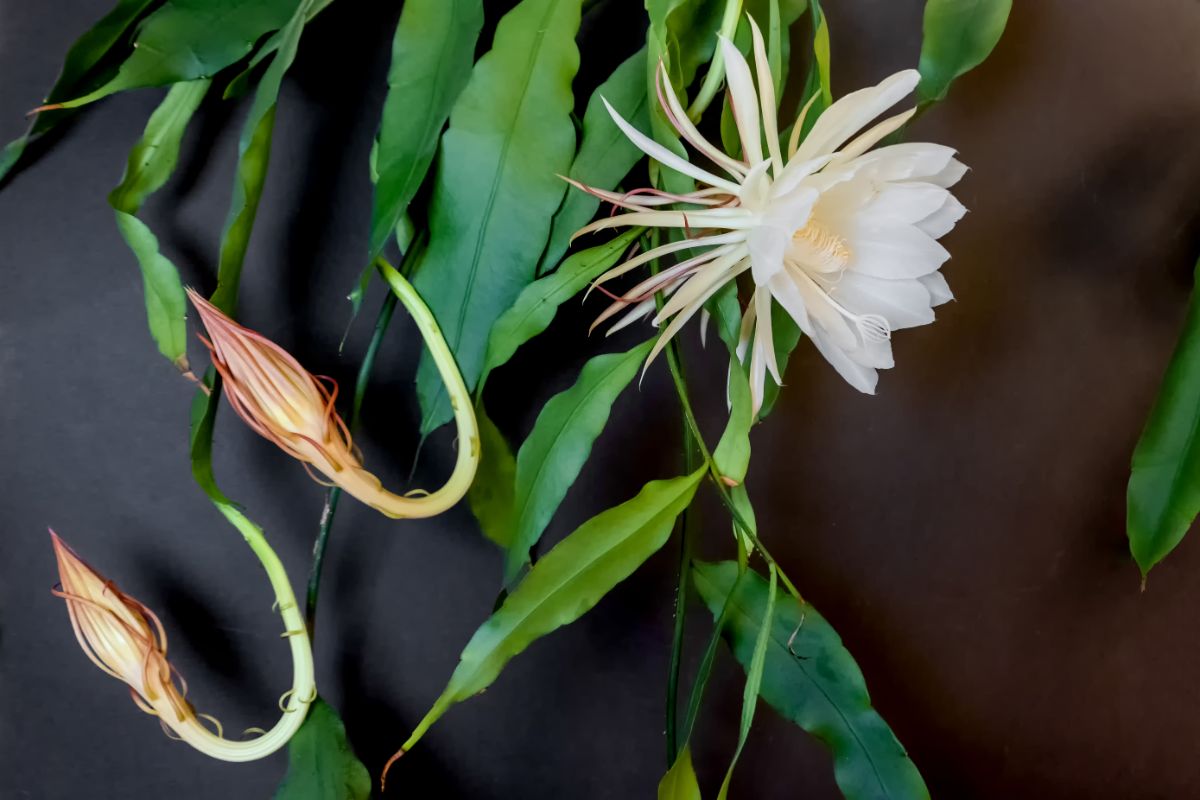
Holiday cacti are reliable bloomers during the colder months. However, if you love the look of these showy plants but you want to get flowers in spring and summer, it may be worth your while to experiment with growing other flowering succulents and cacti. And one excellent option is the orchid cactus!
Orchid cactuses aren’t closely related to true holiday cacti; however, these plants have a similar look and feel. Like holiday cacti, orchid cacti are tropical plants that grow as epiphytes in nature. These plants typically have long and trailing stems that are spine-free and big, bold flowers that are often quite fragrant and bloom at night.
Compared to holiday cactuses, orchid cactus stems aren’t as segmented, but they’re often flat in form. Flowers are usually bigger, too, and they come in various shades, including purple, orange, yellow, red, pink, and white.
Orchid cactuses normally flower in spring and summer, so they work well with holiday cactus plants. Once your holiday cacti stop blooming, you can relish orchid cactus flowers, and vice versa, for nearly year-round blooms. Plus, holiday cacti and orchid cacti have similar care needs!
To show those long, orchid cactus stems to their fullest, try displaying these cactus plants in hanging baskets or allow them to trail over tall houseplant shelves. These plants love part sun and humid environments, and they can be good choices for steamy bathrooms and other humid spots. Orchid cacti can also grow outdoors in USDA growing zones 10 and 11 and their equivalents, but most plant parents keep these beauties indoors so they can enjoy them fully!
Frequently asked questions
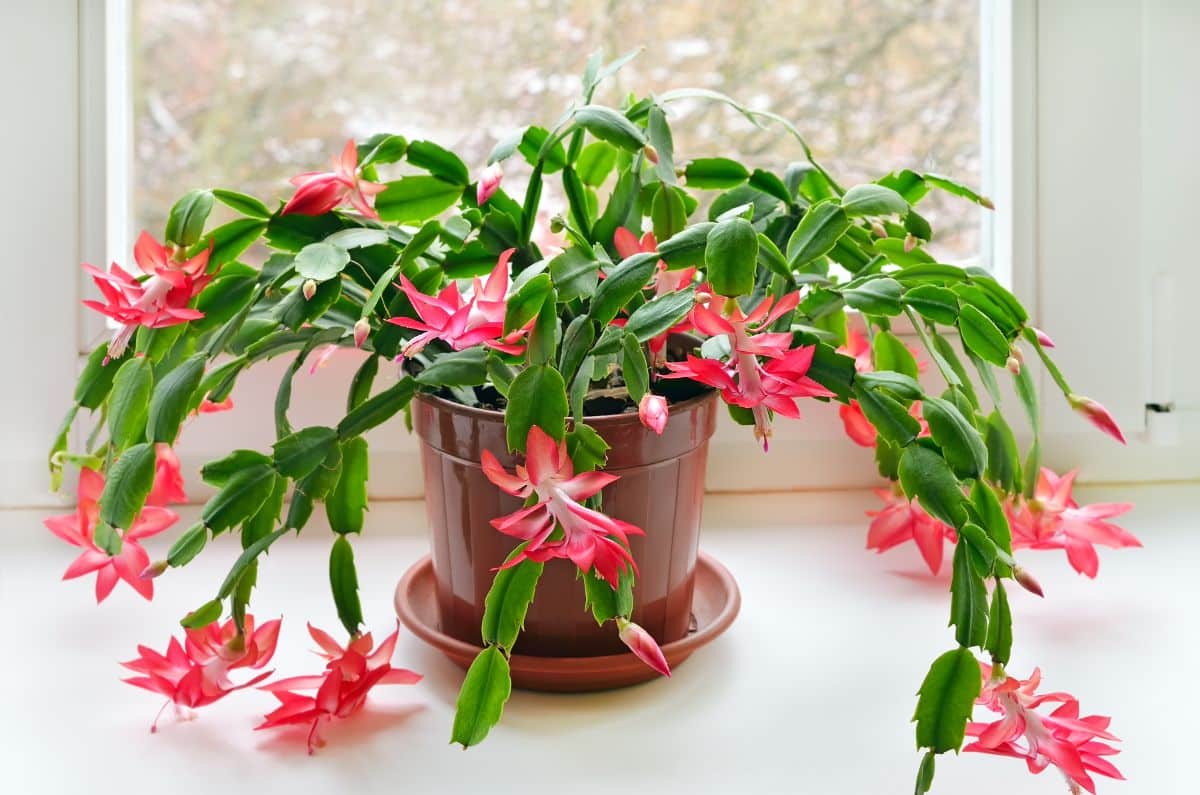
What is the rarest color of Christmas cactus?
Most Christmas cactuses have either pink or red flowers, although these plants can produce blooms in different shades. Yellow flowers tend to be the rarest in Christmas cactuses, and they’re more likely to occur on Thanksgiving cactus plants.
How many times a year does a Christmas cactus bloom?
Most often, Christmas cacti bloom just once a year – around Christmastime. However, plants that are very happy may sometimes bloom again in early spring.
Can a Christmas cactus get too old?
Christmas cacti are long-lived plants. Typically, these plants will live to be about 20 to 30 years old. However, some Christmas cacti have lived over 100 or even 200 years, and families often pass these plants down from generation to generation!
What 2 things trigger a Christmas cactus to bloom?
Short days and cool weather trigger blooming in Christmas cacti. That’s why you’ll often see these plants flowering in mid-winter!
Can I propagate a broken piece of Christmas cactus?
Absolutely! Christmas cacti and other holiday cacti are very easy to propagate via stem and leaf cuttings, and this is a great way to put broken stems to good use. Simply place the cuttings in soil or water, move the cuttings into a spot that receives bright, indirect light, and wait until roots start to sprout.
What is the difference between a Christmas cactus and a false Christmas cactus?
False Christmas cacti are also known as Thanksgiving cacti! False Christmas cacti or Thanksgiving cacti bloom earlier in the year than true Christmas cacti, and their leaf segments have more sharply serrated margins.
Summary
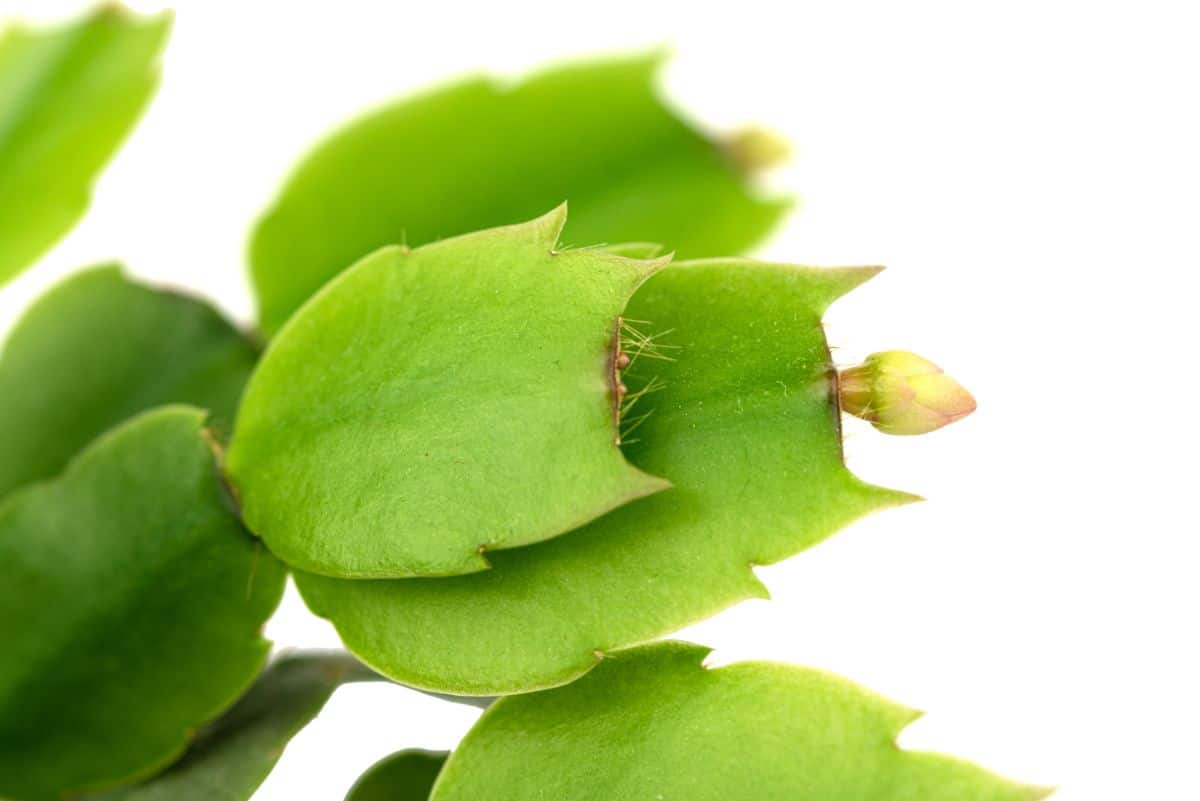
Most houseplants stop growing during the winter months and conserve their energy for springs to come. But holiday cactuses are the rebels of the houseplant world, and they put on a flamboyant display of blooms in late fall to early spring, long before most other plants start flowering.
If you’re hankering for some mid-winter flower color, try out one or all of the holiday cactus varieties we’ve covered today and cherish bright indoor flowers at any time of the year!
If you love holiday cacti flowers, you’ll adore the flashy blooms of air plants, too. Find the best air plants to grow in your home right here!

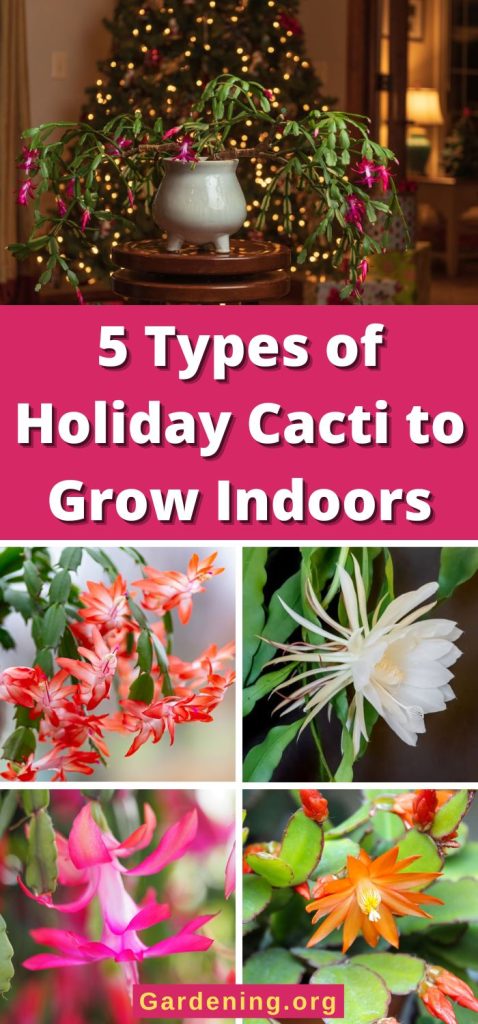
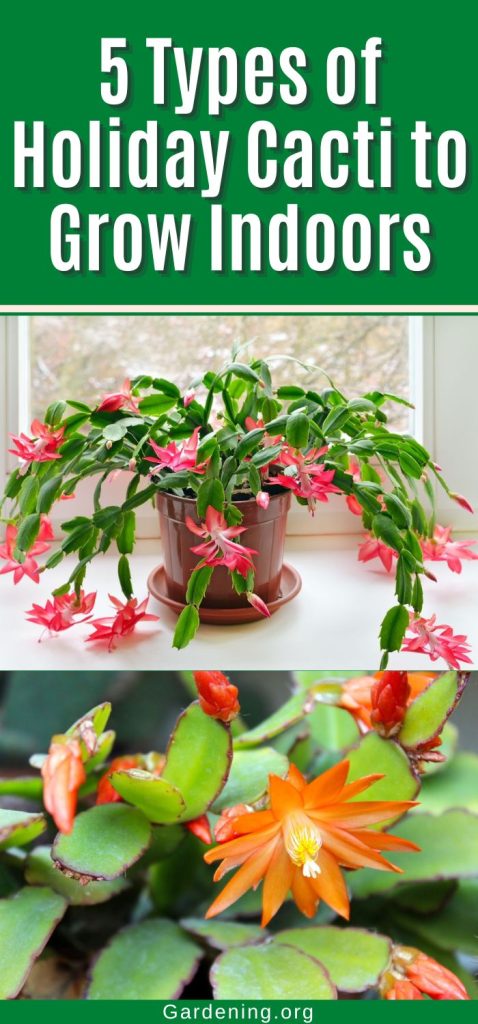

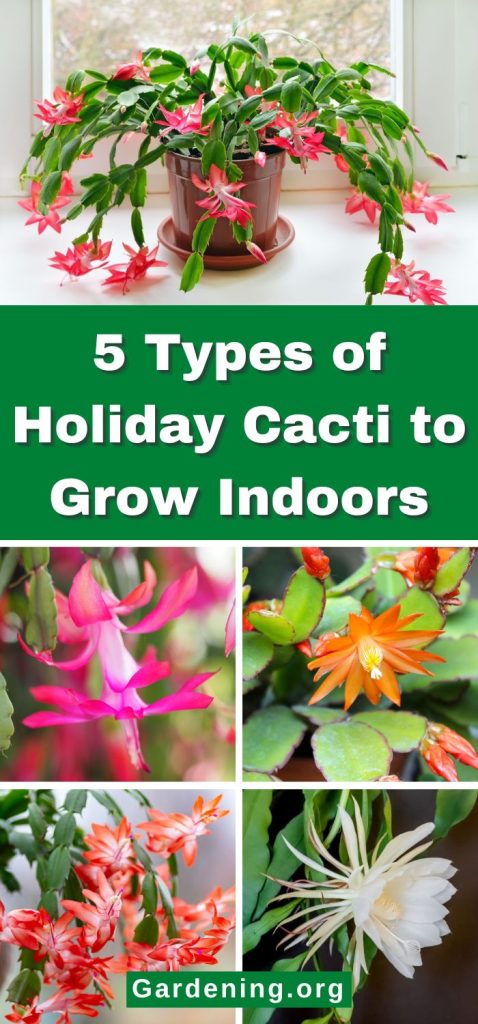
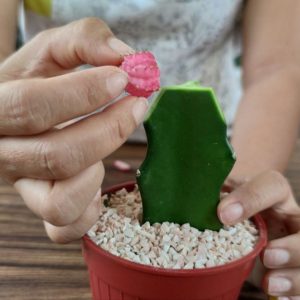
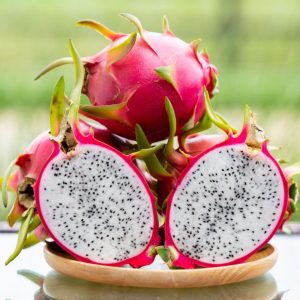
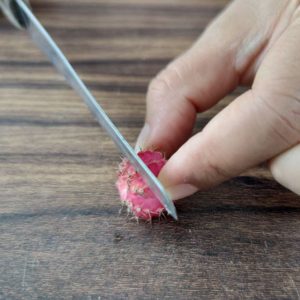
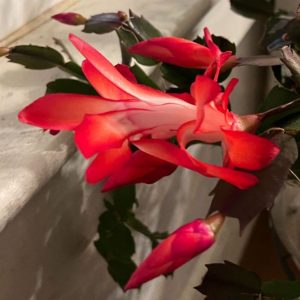
Leave a Reply